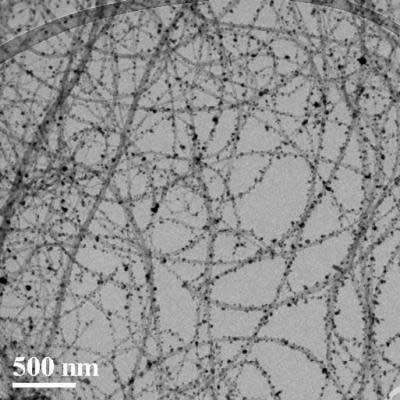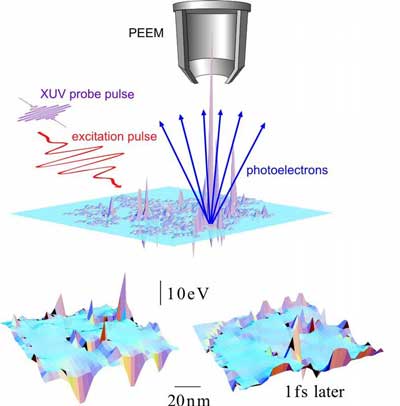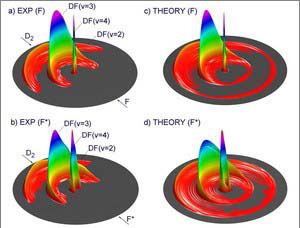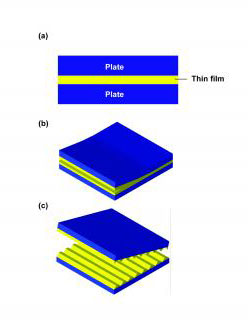A nanotechnology application has enabled researchers to identify a molecular signature common to both familial and sporadic cases of amyotrophic lateral sclerosis (ALS), or Lou Gehrig's disease.
Sep 4th, 2007
Read more
Institute of Nanotechnology is organizing a free public engagement evening 'Nanomedicine�?�hype? Or a real revolution in healthcare?' on November 28 at the Royal College of Surgeons of London.
Sep 4th, 2007
Read more
Rice, Nanyang team aims to leverage Moore's Law for embedded computing.
Sep 4th, 2007
Read more
National Institutes of Health grant of $2.2 million to fund four-year research in nanotechnology.
Sep 4th, 2007
Read more
The Project on Emerging Nanotechnologies has conducted an opinion poll on nanotechnology.
Sep 4th, 2007
Read more
 Researchers find new ways of creating more predictable carbon nanotube material.
Researchers find new ways of creating more predictable carbon nanotube material.
Sep 4th, 2007
Read more
DNA used as a template for nanolithography.
Sep 4th, 2007
Read more
 International team of scientists proposes new ultramicroscope for nanostructures, allowing for the direct and non-invasive measurement of ultrafast processes on attosecond timescales with high spatial and temporal resolution.
International team of scientists proposes new ultramicroscope for nanostructures, allowing for the direct and non-invasive measurement of ultrafast processes on attosecond timescales with high spatial and temporal resolution.
Sep 3rd, 2007
Read more
 The Born-Oppenheimer Approximation is ubiquitous in molecular physics, quantum chemistry and quantum chemistry. However, Chinese Academy of Sciences researchers recently observed a breakdown of the Approximation in the reaction of fluorine with deuterium atoms.
The Born-Oppenheimer Approximation is ubiquitous in molecular physics, quantum chemistry and quantum chemistry. However, Chinese Academy of Sciences researchers recently observed a breakdown of the Approximation in the reaction of fluorine with deuterium atoms.
Sep 3rd, 2007
Read more
On August 24, a center of nanotechnology for cancer diagnosis and treatment was officially inaugurated in Tianjin/PR China.
Sep 3rd, 2007
Read more
Every irregularity no matter how small must disappear: Polishing silicon wafers for solar cells and computer chips demands the greatest precision. Until now, wafers could only be inspected after polishing. A new polishing tool continuously monitors the process.
Sep 3rd, 2007
Read more
Shaking and tapping is often the only way to get the last drop of ketchup out of the bottle. But in future, even this final drop will slide out easily onto the barbecued steak - thanks to a special nanocoating on the packaging.
Sep 3rd, 2007
Read more
 Chemists in Italy are reporting "a real breakthrough" in technology for cleaning and conserving priceless oil paintings, marble sculptures and other works of art.
Chemists in Italy are reporting "a real breakthrough" in technology for cleaning and conserving priceless oil paintings, marble sculptures and other works of art.
Sep 3rd, 2007
Read more
Scientists in Idaho and Korea are reporting development of a protein coating that may turn nanowires into a new drug delivery system that could allow use of lower doses of medicine that are less harmful to normal cells.
Sep 3rd, 2007
Read more
A new study shows that certain laser printers commonly used in offices around the world emit nanoparticles into the air.
Sep 2nd, 2007
Read more
 Creating ultrasmall grooves on microchips - a key part of many modern technologies - is about to become as easy as making a sandwich, using a new process invented by Princeton engineers.
Creating ultrasmall grooves on microchips - a key part of many modern technologies - is about to become as easy as making a sandwich, using a new process invented by Princeton engineers.
Sep 2nd, 2007
Read more






 Subscribe to our Nanotechnology News feed
Subscribe to our Nanotechnology News feed